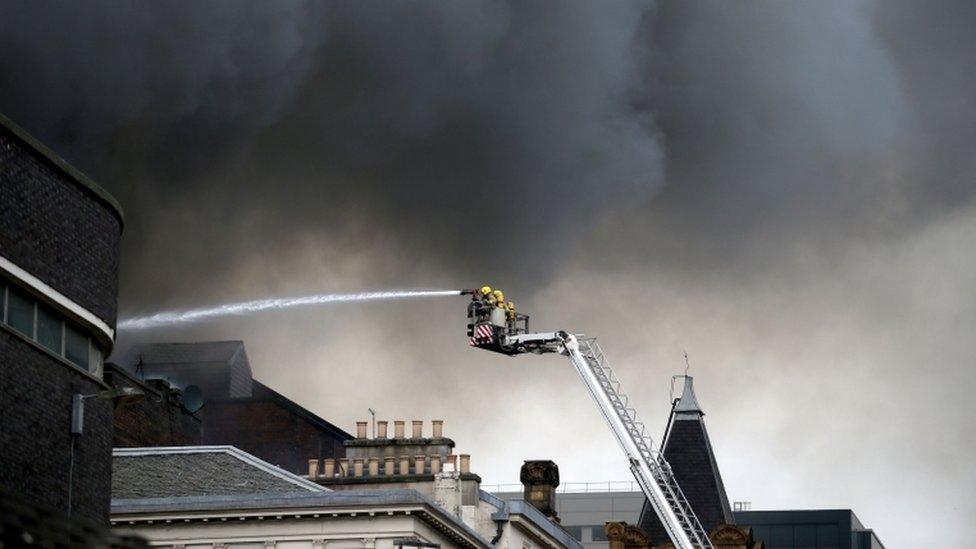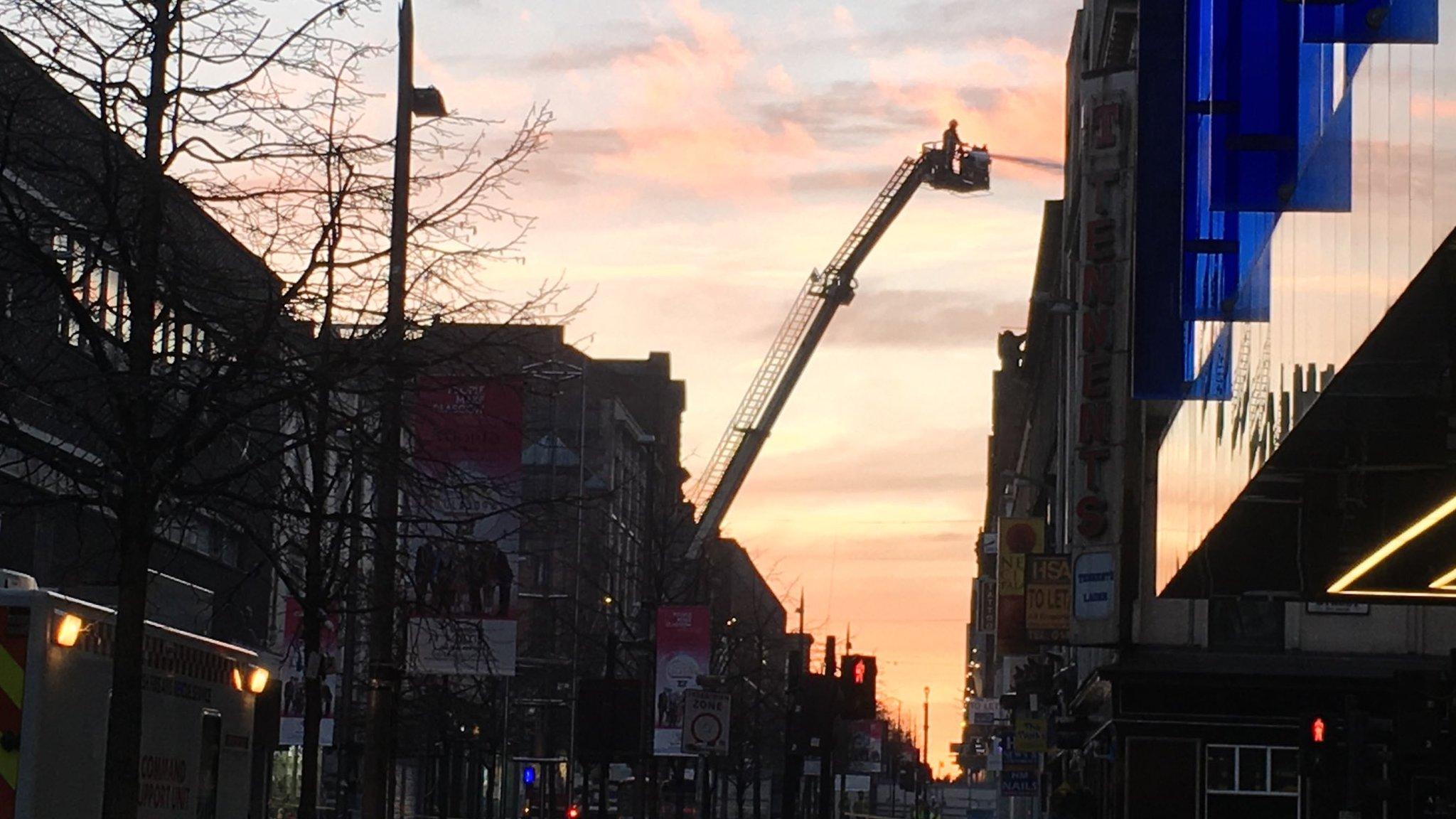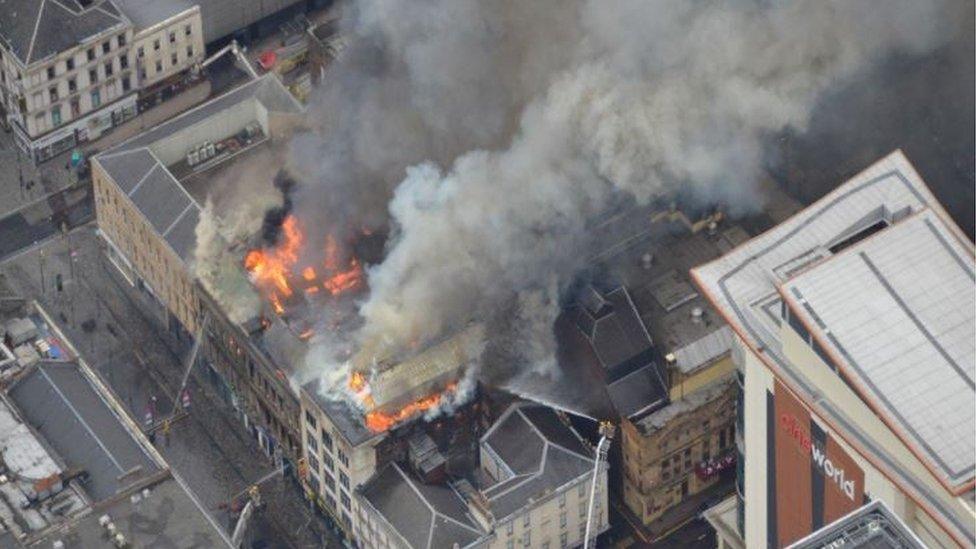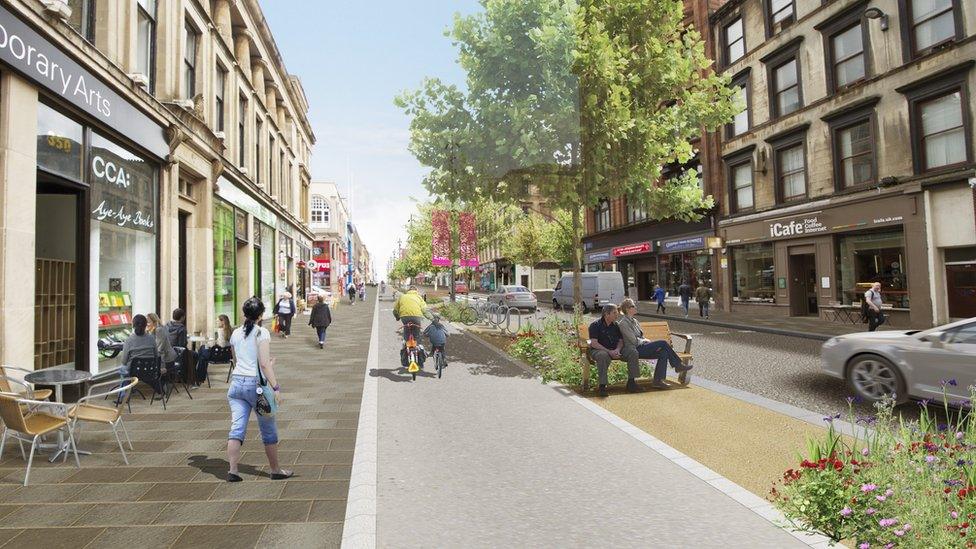Fire-hit nightclub demolition could take two months
- Published
Several buildings are being demolished
The demolition of buildings devastated by a fire in Glasgow city centre last month could take up to two months.
A major blaze spread through the block on Sauchiehall Street, which housed businesses including Victoria's nightclub.
Glasgow City Council deemed buildings at 92-96 and 98-106 unsafe and said they would have to be pulled down.
But it could take almost two months for construction workers to take down the structure "almost brick by brick".
The fire was one of the biggest faced by Scotland's fire service since it was amalgamated nearly five years ago.
A 54m (160ft) boom has been in place since last Friday to allow a survey of the buildings, which are protected by 24-hour security.
Cranes arrived at the site on Thursday morning.

More than 120 firefighters tackled the blaze at its height
The fire took hold in the roof of the building at about 08:20 on Thursday 22 March.
At the height of the blaze, more than 120 firefighters and 20 fire engines were mobilised to the city centre.
There were fears the fire could spread to nearby buildings, including the Pavilion Theatre.
Last week it emerged staff won't be allowed access to the historic venue for up to two months.
The council estimates that some of the roads and footpaths in the area could be shut for two months while the work takes place.
Painstaking job
The properties affected are 92 to 106 Sauchiehall Street - from The Works stationery shop to Savers at the junction with Hope Street.
The council met the building owners before demolition work started.
Businesses in the block, including Greggs, Specsavers and Victoria's nightclub, are dealing with insurers.
Other surrounding buildings, including the Pavilion theatre, will remain closed while the demolition is carried out.
Raymond Barlow, assistant head of building standards at Glasgow City Council, said it would be a painstaking job.
He added: "We have operatives on cranes who will gradually reduce the height of the building, working it down slowly and carefully to try and avoid collapse, and once it gets low enough then machines will come in and it will become a rubble clearing operation thereafter.
"We're in one of the busiest parts of Glasgow but we have an extensive exclusion zone and many buildings evacuated because of the tight site.
"Staff of the Pavilion and other surrounding buildings have to remain out of their premises because of the dangers of collapse, the lane at the back in very narrow and the rear wall is in danger of collapsing so we can't let anyone near that until we get the building down."
- Published27 March 2018

- Published23 March 2018

- Published22 March 2018

- Published4 December 2017
